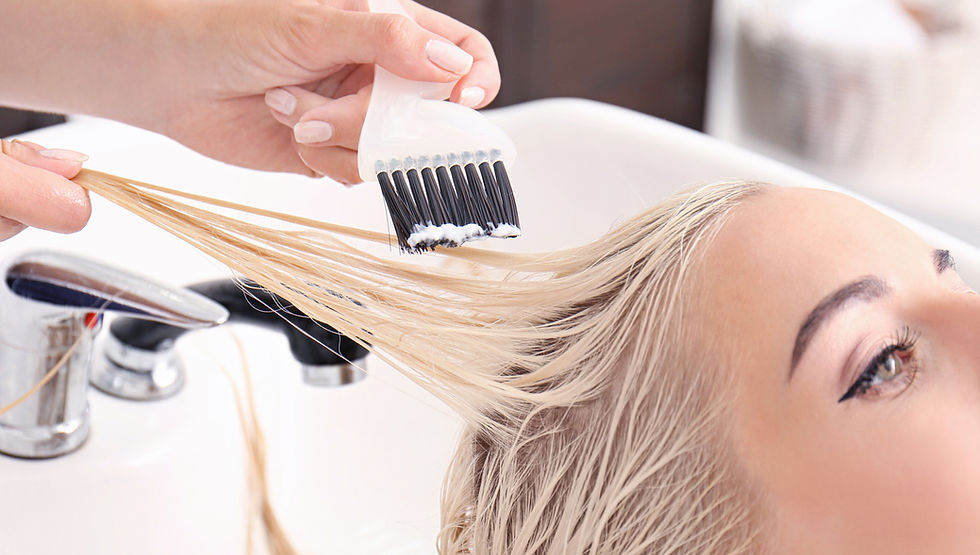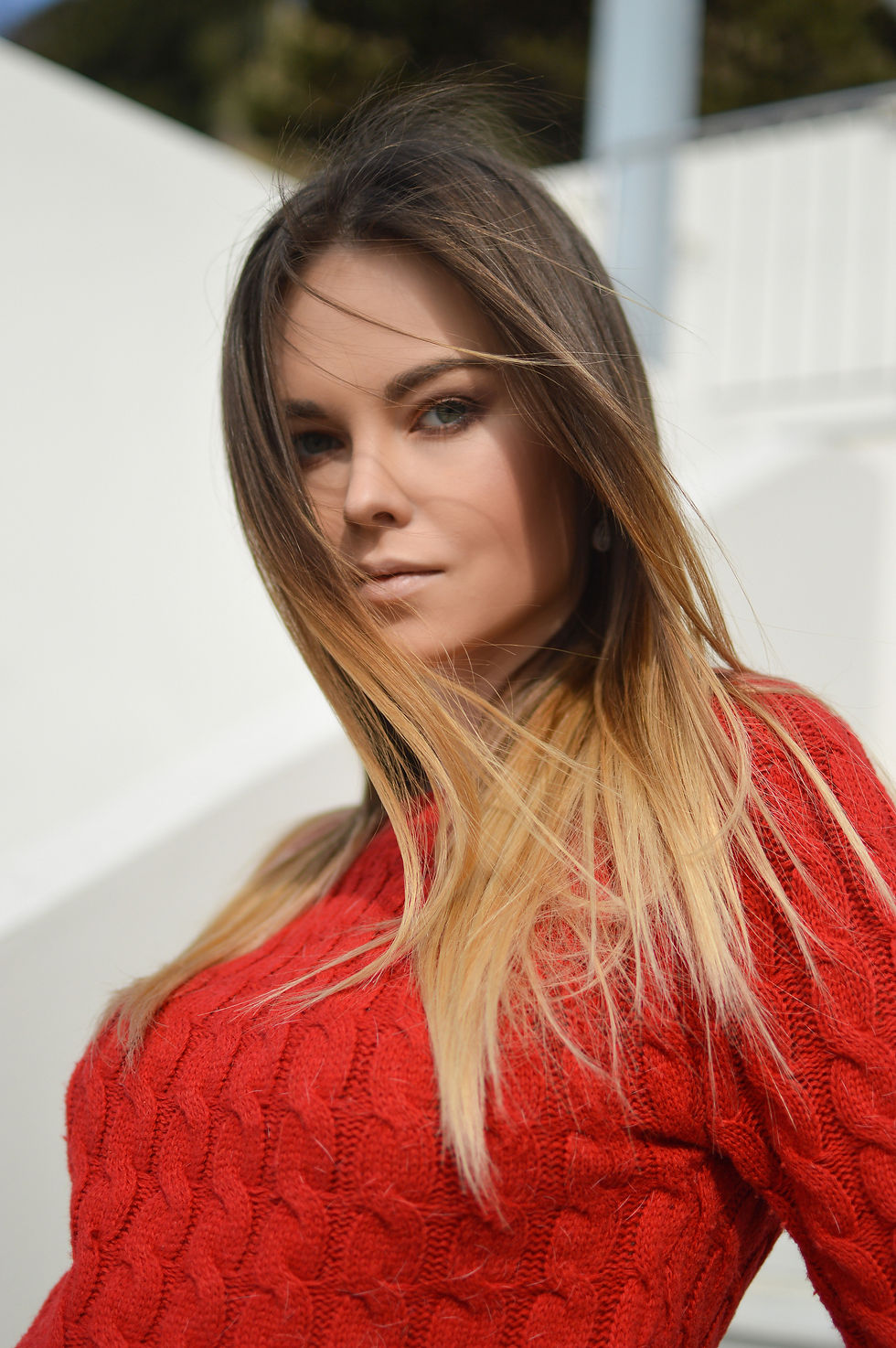
"Mastering the Art of Hair Color: Highlights, Lowlights, Foliage, Balayage, and Ombre Demystified" Introduction: The world of hair color is an artistic canvas, offering a plethora of techniques to enhance natural beauty and express individual style. In this blog, we'll delve into the nuances of five popular hair coloring techniques: highlights, lowlights, foliage, balayage, and ombre. From the subtle elegance of highlights to the bold transitions of ombre, each technique possesses its own unique charm. Let's explore the methods behind these transformative styles.

1. Highlights: A Splash of Light Technique: Traditional highlights involve selecting strands of hair and applying a lighter color. This can be achieved through foiling or a cap, creating a scattered or uniform pattern. Babylights Technique: For a softer, more delicate effect, babylights involve finely woven, ultra-thin highlights to mimic the natural variations in hair color.
2. Lowlights: Adding Dimension and

Depth Technique: Lowlights are the darker counterpart to highlights. Specific strands of hair are colored with a shade darker than the base color, introducing depth and richness. Contrast Lowlights: This technique involves using lowlights with a significant color contrast, creating a striking and vibrant look.
3. Foliage: Nature-Inspired Harmony

Technique: Foliage combines highlights and lowlights to replicate the nuanced tones found in natural hair. The technique involves hand-painting strands for a seamless blend. One of the captivating aspects of foliage is its ability to create a seamless blend of highlights and lowlights, adding depth and dimension to the hair. We'll delve into the foliage technique, focusing on the use of teasing and foil to achieve a shadow effect at the roots for a truly organic and harmonious look. Sombre (Soft Ombre) Foliage: For a subtle and gradual transition, sombre foliage creates a soft, lived-in look with minimal contrast.
Benefits of Foliage with Teasing and Foil:
Natural Shadow Effect:
Teasing at the roots creates a subtle darkened area, replicating the shadowing effect found in natural hair.
Soft Transition:
The foil allows for precise application and helps blend colors seamlessly, avoiding harsh lines and creating a soft, lived-in appearance.
Tailored Depth:
The technique offers the flexibility to customize the depth and intensity of both highlights and lowlights, resulting in a personalized and multidimensional look.
A Symphony of Light and Shadow
Foliage, enriched with the teasing and foil techniques, transforms hair coloring into an artful masterpiece. This approach captures the essence of nature's play of light and shadow, allowing for a stunning and organic result. As you embark on the journey of hair coloring, consider the beauty of foliage for a vibrant and harmonious expression of individuality.

4. Balayage: Hand-Painted Precision Balayage is a highly sought-after hair coloring technique renowned for its natural, sun-kissed results. Originating from the French term "balayer," meaning "to sweep," this method involves hand-painting or sweeping color onto the hair in a freehand fashion. Unlike traditional foil highlights, balayage creates a soft and seamless transition between darker roots and lighter ends. This technique allows for a personalized, low-maintenance look with a natural flow, as the color application is tailored to accentuate the individual's features and hair texture. Balayage has become a go-to choose for those seeking effortlessly beautiful, multidimensional hair color that mimics the effects of sun exposure for a radiant and modern aesthetic.
5. Ombre: Bold and Beautiful Gradients Technique: Ombre involves a color gradient from dark to light, creating a distinct transition

line. It can be applied using various color combinations. Reverse Ombre: This technique reverses the traditional ombre, starting with lighter tones at the roots and transitioning to darker shades towards the tips.
Choosing the Right Technique for You:
Consider Your Style:
Are you aiming for a natural, subtle look or a bold, high-contrast transformation?
2. Maintenance Preferences:
How frequently are you willing to touch up your color? Techniques like balayage and foliage often offer a more low-maintenance approach.
3. Color Transition:
Do you prefer a gradual transition of color or a more distinct contrast between shades?


1. Consult with Your Stylist:
A professional stylist can guide you in choosing the technique that complements your features, lifestyle, and personal style.
Conclusion: Artistry in Every Strand From the delicacy of baby lights to the drama of ombre, each hair coloring technique is a work of art. The key is to align your desired look with a technique that suits your individuality. Whether you're seeking a subtle refresh or a bold transformation, the world of hair color is yours to explore. Embrace the artistry, consult with your stylist, and embark on a journey of self-expression through vibrant, personalized hues. Frequently Asked Questions about Hair Coloring Techniques: Highlights, Lowlights, Foliage,

Balayage, and Ombre
Highlights:
Q: What are highlights, and how are they applied?
A: Highlights involve lightening specific strands of hair to add dimension. They are applied using techniques like foiling or freehand painting.
Q: Can highlights be customized to suit different hair colors?
A: Absolutely. Highlights can be tailored to complement various base colors, creating a personalized and natural look.
Q: Do highlights require a lot of maintenance?
A: Maintenance varies depending on the technique and color chosen. Traditional highlights may require touch-ups every 6-8 weeks.
Lowlights:
Q: What's the purpose of lowlights in hair coloring?
A: Lowlights involve coloring strands darker than the base or highlighted color to add depth and richness. They complement highlights for a multidimensional effect.
Q: Can lowlights be used to achieve a more natural appearance?
A: Yes, lowlights are excellent for creating a natural look by mimicking the variations in natural hair color.
Q: How often should lowlights be refreshed?
A: Lowlights typically require touch-ups similar to highlights, depending on the growth and desired maintenance level.
Foliage:
Q: What is foliage, and how does it differ from traditional highlighting?
A: Foliage combines highlights and lowlights, creating a natural, lived-in look. It involves hand-painting strands for a seamless blend.
Q: Does foliage require a specific base color to be effective?
A: Foliage can be adapted to various base colors, making it a versatile technique for personalized results.
Q: How is the teasing and foil technique used in foliage for a shadow effect?
A: Teasing at the roots creates a shadow effect, and foils are strategically placed for controlled color application, resulting in a harmonious look.
Balayage:
Q: What sets balayage apart from traditional highlighting methods?
A: Balayage involves freehand painting for a natural, sun-kissed effect. It offers a softer and more blended transition compared to traditional foil highlights.
Q: Can balayage be applied to different hair lengths and textures?
A: Absolutely. Balayage is versatile and suits various hair lengths and textures, allowing for a customized and effortless appearance.
Q: Is balayage a low-maintenance coloring option?
A: Yes, one of the advantages of balayage is its low-maintenance nature, as regrowth is less noticeable compared to traditional highlighting methods.
Ombre:
Q: What is ombre, and how does it differ from balayage?
A: Ombre involves a distinct color gradient from dark to light, creating a bold transition. Balayage, while similar, focuses on a more blended effect.
Q: Can ombre be personalized with different color combinations?
A: Absolutely. Ombre allows for creative color choices, and various combinations can be used to achieve unique and eye-catching looks.
Q: Is ombre suitable for all hair lengths?
A: Yes, ombre can be adapted to various hair lengths, providing a striking and fashion-forward appearance.
These frequently asked questions provide insights into the techniques and characteristics of highlights, lowlights, foliage, balayage, and ombre, helping individuals make informed decisions about their preferred hair coloring methods.
Frequently Asked Questions: Hair Color and Highlights Care
Q1: How can I maintain the vibrancy of my hair color after getting it done?
A: To preserve color vibrancy, use sulfate-free shampoos and conditioners specifically designed for color-treated hair. Wash with cool water to prevent fading and avoid over washing, opting for dry shampoo between washes.
Q2: How soon after coloring should I wait before washing my hair?
A: Wait at least 48 hours after coloring to allow the color to set. This gives the cuticle time to close, ensuring the longevity of your color. For vibrant colors, reds and coppers, washing less frequently is better to keep the longevity of your color.
Q3: Are there specific products I should avoid protecting my color?
A: Avoid products containing sulfates, as they can strip color. Limit exposure to chlorine and protect hair from UV rays with hats or UV protection sprays to prevent color fading. Avoid high heat from showers, and heat styling products.
Q4: How can I prevent my highlights from becoming brassy?
A: Use a purple shampoo once a week to neutralize brassy tones in blonde or light-colored highlights. Regular toning treatments at the salon can also help maintain a cool, fresh look.
Q5: What's the best way to protect my hair during heat styling?
A: Apply a heat protectant before using styling tools to shield your hair from damage. Opt for lower heat settings when possible and give your hair occasional breaks from heat styling.
Q6: Can I still use hair masks and deep conditioners with color-treated hair?
A: Yes, regular deep conditioning is essential for color-treated hair. Use masks specifically formulated for colored hair to nourish and maintain the health of your locks.
Q7: How often should I trim my hair to maintain color and health?
A: Regular trims every 6-8 weeks help prevent split ends and maintain the overall health of your hair, preserving the integrity of your color and highlights.
Q8: Is it advisable to avoid sun exposure after coloring?
A: Limit sun exposure, especially in the first few weeks after coloring, to prevent fading. When exposed to the sun, use hats or UV protection sprays to shield your hair.
Q9: Can hard water affect color-treated hair?
A: Yes, hard water minerals can contribute to color fading. Consider using a chelating or clarifying shampoo occasionally to remove mineral build-up.
Q10: Any additional tips for maintaining vibrant color and highlights?
A: Sleep on silk or satin pillowcases to reduce friction and prevent color transfer. Additionally, schedule regular touch-ups to address any root growth and maintain a polished look.
By following these care tips and incorporating them into your hair care routine, you can prolong the life and vibrancy of your color and highlights, ensuring a beautiful and healthy mane.
Written by
Michelle E.
Owner/Hairstylist/ N.P.
Michelle's Luxury Hair and Wellness Salon
#HairHighlights #HighlightHair #DimensionalColor #FoilHighlights #BrightenUp #StrandLights #LighteningTechniques #ColorDimension #HighlightTrends #GlowingLocks #Lowlights#DepthAndDimension #RichColor #DarkeningStrands #SubtleContrast #NaturalDepth #LowlightsEffect #DimensionalBrunette #HairContrast #ShadowedStrands









Comentarios